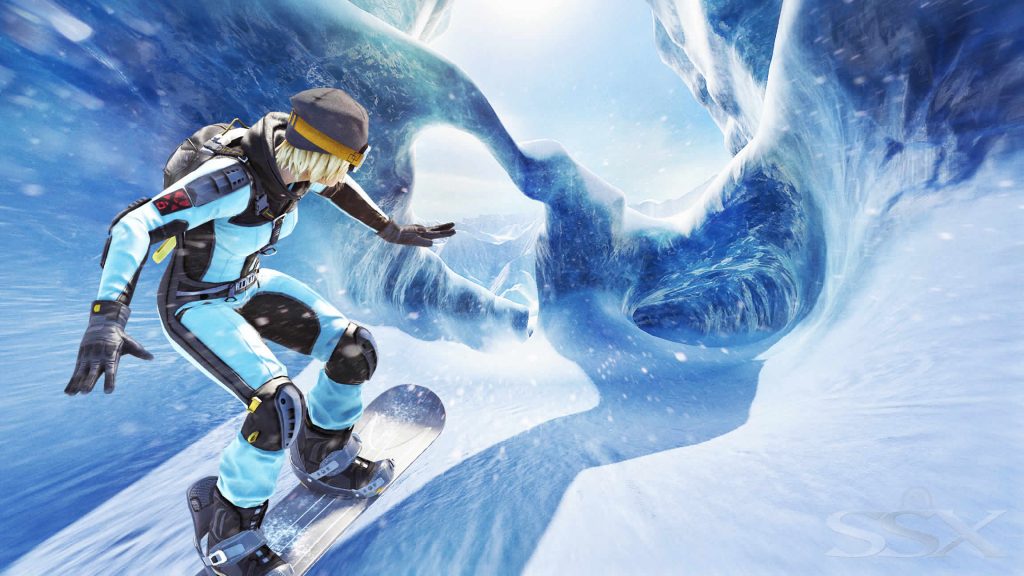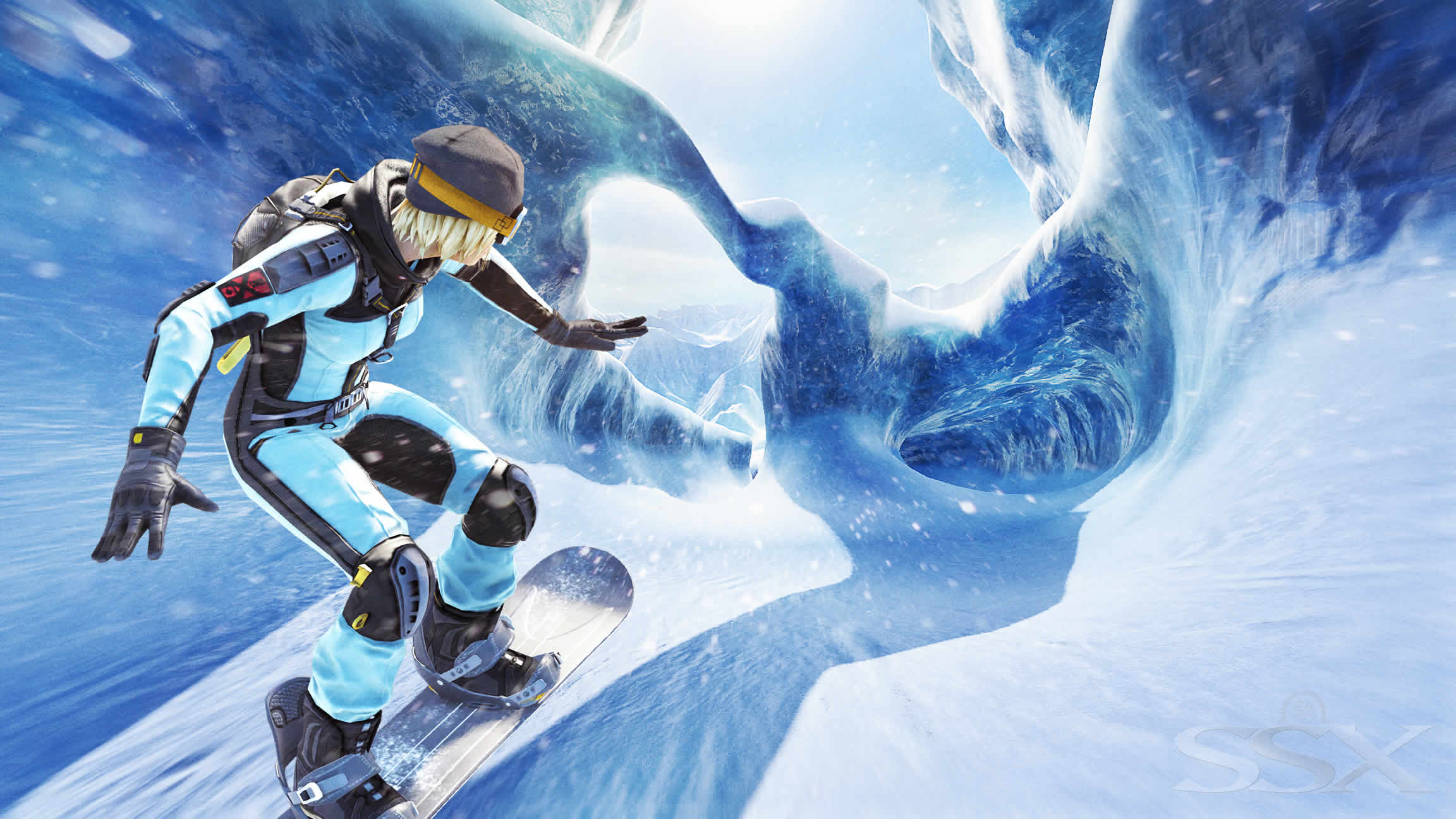Overall, the new SSX is full of polish. The graphics are clean and crisp, with beautiful vistas of interesting locations represented, which are somewhat less cartoony than previous installments but still pretty outrageous. You’ll trick off of helicopters, grind the side of a nuclear reactor, and race down the slopes of Kilimanjaro, all displayed in incredible and minute detail and at a smooth frame rate to boot. Even the soundtrack feels finely-tuned, the electronic beeps and thudding bass of which fade away on high jumps to give more credulity to your perception of actually leaving the ground.
To get a burst of speed, you’ll need to fill up your boost meter – and the way to do that is by pulling off tricks. Tricks are the heart and soul of SSX, and the latest edition in the franchise makes the necessary maneuvers seamless, and the results (pass or fail) thrilling to experience. You know you’ve reached the so-called “tricky state”– allowing unlimited boost and the performance of your super-awesome finishing-move-style ultra-tricks – when the background music warps into a remix of Run-DMC’s “It’s Tricky” (apropos, no?) , allowing you to keep your eyes on the road and your hands firmly on the controls.
Actually, the controls are, one of the best parts of the new SSX; the control scheme has been revamped and feels much more intuitive. You can use the thumb-stick or buttons as per your preference, and pulling tricks is accomplished by indicating a body part, followed by a direction to go in or part of the board to be utilized. It’s incredibly simple – almost more trouble to explain in words than it will be for you to grasp after playing for five minutes – but powerful, and lets you get right down into the business of working up ridiculous combos in no time flat. Those who prefer the old control style can switch back to it at will, but it’s hard to imagine how the new setup wouldn’t be viewed as an improvement.
Since the only way to win is to use every second of airtime to pull off insanely long combos, much of SSX’s gameplay carries a heavy element of push-your-luck danger calculation. The AI opponents are no slouches, and getting supreme air and being able to nail that one extra trick before sticking your landing can mean the difference between a win and that other thing we don’t like to talk about (starts with “L”). Misjudge the amount of time you have on descent by just one second, though, and you’ll plant yourself like a tree in the side of a mountain. Big jumps can eat up speed as well, so while dodging and weaving through the terrain, you’ll have to be constantly measuring the benefits of doing long tricks and racking up points/boost ability against your desire to maintain the best time on course.

Level design in SSX also deserves some serious accolades. Supposedly based on actual satellite reconnoitering of the real locations they represent, the routes you take have obviously seen a fair amount of tweaking and world-building by the hand of designers. Each feels organic and singularly dangerous, being positively fraught with obstacles that require constant attention to avoid smashing into or flipping over. A helpful helicopter pilot provides you with ongoing directional advice, but once you get used to the courses you can turn off his chatter. As you’re racing down steep mountain slopes, the danger of falling into a chasm is ever-present; when this happens, the game forces you to “rewind” your progress to an earlier point, costing you time (as the race doesn’t rewind for other players) or to lose points, depending on the game type. Speaking of game-types, there are two main single-player modes: a story-mode World Tour, and one-off race events that let you jump quickly into a competition. Each level of the World Tour mode features one of the so-called Deadly Descents, and they are indeed aptly named; you’ll need to maneuver quickly and accurately in order to make it down in one piece, often as not assisted by some special equipment unique to the level, such as a wingsuit to bridge otherwise unjumpable gaps.
Of course, multiplayer modes are no longer really options in console games like this, and happily an above-average amount of thought and consideration has gone into the ones included in SSX.
There are basically two kinds of events: Explore, which lets you compete for time and points finding the best path through a level, and Global events that set a time limit (measured in days or weeks) in which thousands of players on the net can compete for the best score or time on a course. The game is wired from the ground-up for online play, and assiduously keeps you informed from the very first screen about the status of your achievements on multiplayer events, so you can jump in and try to regain your footing if you drop in the rankings. Both kids of events let you plant geotags, little markers which generate credits as long as they remain uncollected by other players. These credits can be used to upgrade equipment, or to purchase bonus abilities or score multiplyers (you can also buy credits outright, which is a bit of a cop-out). Additionally, when you play with friends, their progress through the levels leaves a glowing, illuminated outline, so you’ll know if you inadvertently stumble upon a path down the mountains that another player has already charted. Sadly, there’s no built-in mode for simple local split-screen multiplayer, although you can create global events that are limited to just a few of your friends.
The very short version of this review, which I probably should have put at the beginning in order to save everyone time, goes something like this: the new SSX is not to be missed. Bam.

